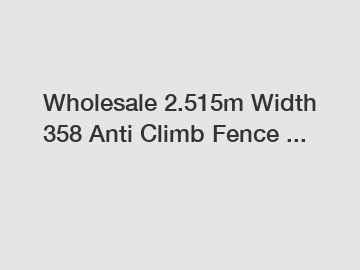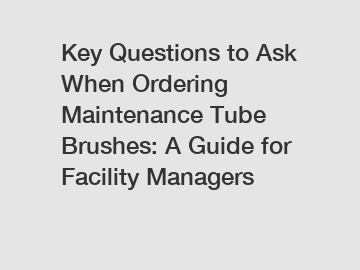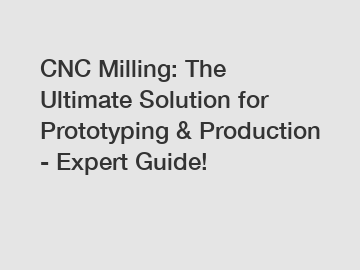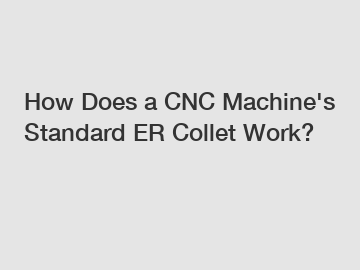What are the advantages and disadvantages of injection molding?
Advantages and Disadvantages of Injection Molding
Originally published on fastradius.com on March 23,
WIT MOLD supply professional and honest service.
Injection molding involves injecting molten plastic into carefully designed molds before cooling and ejecting the final part. It's a highly repeatable process that enables companies to create high volumes of identical plastic parts with good tolerances at a low cost per part.
Injection molding has numerous applications in a wide variety of industries ' from the automotive industry to the medical industry ' but it isn't the best choice for every project. Before you decide whether or not to injection mold your part, carefully consider the injection molding pros and cons.
The Advantages of Injection Molding
Many manufacturers turn to injection molding because:
1. It allows for complex geometries with tight tolerances.
Injection molding allows for large volumes of uniform, complex parts. However, you must pay attention to vent and gate placements, weld lines, corner transitions, wall thickness, rib and boss design, and more to ease ejection and achieve precise parts.
With injection molding, you can easily achieve repeatable part tolerances of ± 0.500 mm (0.020''). In some cases, you can even produce parts with tolerances of ± 0.125 mm (0.005''), giving you parts that are accurate enough for most applications and comparable to 3D-printed or CNC machined parts.
2. It's compatible with a wide range of materials and colors.
Today, there are over 25,000 engineered materials that are compatible with injection molding, including thermoplastics, thermosets, resins, and silicones. With all of these options, you'll be able to find one that offers the right balance of physical, mechanical, and chemical properties. Commonly used materials include acrylonitrile butadiene styrene (ABS), polyethylene (PE), polystyrene (PS), and polypropylene (PP). You can also use a mixture of materials to produce a part with the strength, impact resistance, or stiffness you need. For example, you might add glass fibers to your thermoplastic to create a strength-enhancing composite.
You also have a variety of options when it comes to colors. Consider using masterbatches, pre-colored resins, liquid colorants, or salt and pepper blends to achieve your desired color.
3. It's very efficient.
While it can take several minutes ' or even hours ' to 3D print or CNC machine a single part, most injection molding cycles only last 10 to 60 seconds. Even if you have a complex geometry that takes around 120 seconds to mold, you can include several smaller parts in one larger mold. This helps maximize efficiency and gets the most out of each mold, allowing you to create hundreds of identical parts an hour at a low cost.
4. It offers high repeatability and reliability.
One of the main benefits of plastic injection molding is its high repeatability. Once you've created your mold, you can produce thousands of parts before needing to maintain your tooling. An aluminum mold will generally last between 5,000 and 10,000 cycles, and a full-scale steel production mold can last for over 100,000 cycles. Plus, since injection molding uses the same mold for each part, you'll have identical products.
5. You can reuse material.
Though injection molding generates less post-production material waste than many other manufacturing processes, it still creates excess scraps. However, you can easily regrind, melt, and reuse any sprues, runners, or other leftover plastic parts to save on material and reduce material waste.
The Disadvantages of Injection Molding
There are plenty of advantages of plastic injection molding, but it's not without its drawbacks. Some disadvantages include:
1. Start-up costs are high.
Since custom tooling must be created for each injection molded part, initial start-up costs are high and this isn't economical for low-volume production runs. Tooling for a simple design and a small production run can cost between $2,000 and $5,000, but tooling for large, complex molds ready for full-scale production can cost several times that. Although you can reuse these molds again and again and save on tooling costs down the line, it's worth considering how much molds cost upfront. An injection molding manufacturing partner can help you maximize your budget and refine your mold design so you can produce the best possible part for the best price.
2. Initial lead times are long.
A CNC machined part can be delivered within 5-10 days, and industrially 3D printed parts often have lead times of 3-5 days. However, injection molding has a longer lead time. It often takes 5-7 weeks to manufacture tooling and 2-4 weeks to produce and ship parts.
In part, this long lead time can be attributed to the complexity of the molds themselves. In addition to containing the negative of the part, these molds have complex runner and water cooling systems to facilitate material flow and faster cooling. It can take months of design and testing before the final mold is ready for production, and any design changes can further increase turnaround times.
With the help of a manufacturing partner's expertise, you can avoid falling into common mold pitfalls that might set you back weeks and thousands of dollars. They can also help accelerate the design, testing, and production phases.
3. Design changes are expensive.
With 3D printing, you can simply upload a file and print a new part whenever you make a design change, but that's not the case with injection molding. If you make a design change, you'll likely need to create a new mold from scratch, which means pouring more time and money into your project.
To avoid costly design changes and ease the demolding process, avoid undercuts and sharp edges, ensure wall thicknesses are uniform, and add draft angles. If you need some guidance, an experienced manufacturing partner can offer expert design advice.
Injection Molding With SyBridge
Between its efficiency and high repeatability, injection molding has plenty to offer. However, it's all too easy to make an expensive mistake that sets production back weeks. That's where a trusted manufacturing partner can help.
Contact us to discuss your requirements of advantages and disadvantages of injection moulding. Our experienced sales team can help you identify the options that best suit your needs.
Additional reading:What are API valve standards and why?
CNC Collets: Types and Maintenance Tips
Revolutionary Frac Gate Valve Design with Ball Screw Technology
API 6A: The Future of Oilfield Equipment?
Helpful hints for buying wire mesh
Top tips for saving on SSV valves
Top Tips for Picking Perfect Pup Pipes
When you work with SyBridge, our team of experts can guide you through the entire production process and answer any questions you have about injection molding's advantages and disadvantages. Ready to get started? Contact us today.
Plastic Injection Moulding Advantages & Disadvantages
What are Plastic Injection Moulding Advantages and Disadvantages ?
Plastic injection moulding advantages centre around great precision and high repeatability, combined with speed, a low cost per part and a huge choice of available plastics. Disadvantages include a higher initial cost and lead time than some other processes.
Plastic Moulding Advantages
1. Precision
Plastic injection moulding is perfect for very intricate parts. Compared to other techniques, moulding allows you to incorporate more features at very small tolerances. Have a look at the image to the right. You can hold this moulding in the palm of your hand and it has bosses, ribs, metal inserts, side cores and holes made with a sliding shut off feature in the tool. That's an awful lot of features on a small part! It would be impractical to make using plastic fabrication and impossible to make using the vacuum forming process.
2. High repeatability
Once your mould tool is made, identical products can be made over and over again. And again. A decently made mould tool has a very long mould tool life, as long as it's treated well by the moulding machine setters !
3. Low cost per part
Whilst there is an initial high investment for the plastic injection moulding tool, after that the cost per part is very low. Other plastic processing techniques may require multiple operations, like polishing, whilst injection moulding can do it all at once. If you chose to CNC machine the part above, it would cost hundreds of pounds per part. If you're looking to go into full production, injection moulding is the way to go.
4. Fast
Cycle times can be as low as 10 seconds. Combine that with a multi-impression injection moulding tool and you get a LOT of products very quickly. That part above takes a bit longer as it's a specialist material and has a lot of features to be moulded correctly, but at about 50 seconds you'd still get 70 parts per cavity per hour. CNC machining a one-off would take half a day - 3D printing it even longer!
5. Material choice
There's a vast amount of materials available for plastic injection moulding. A range of more common materials, but also things like antistatic plastic, thermoplastic rubber, chemical resistant plastics, infrared, biocompostable...and with colour compounding or masterbatch colouring you have an endless choice of colours as well. The moulding above is boring black, but it's made out of PPO - poly(phenylene oxide) - which is an extremely rigid and flame-retardant material.
6. Special Surface Finishes, Engraving & Printing
In addition to a range of colours, the injection moulding tool can be made with a special finish which will show on the moulding. Just about any finish you like, for example leather look, soft touch, sparked, high shine, you name it. You can also have logos or other text engraved in the tool. Finally, you can have your mouldings printed, as a range of inks are available that will print well on plastic.
7. Little plastic waste
Part repeatability is very high for injection moulding. Even the sprues and runners (the leftover bits of plastic created by the 'tunnels' through which the plastic material reaches the actual mould) can be reground and the material reused. You can explore this in more detail on our environmental impact of injection moulding page.
Plastic Moulding Disadvantages
Sounds amazing doesn't it ? Of course there are also some disadvantages:
1. High Initial Cost
Often, several rounds of designing and modelling are needed before the go-ahead or production is given. Then, the injection moulding tool needed to make the mouldings will need designing & manufacturing. The mould tool is an intricate piece of work which costs manpower, material and many machining hours to make and represents the largest cost in getting injection mouldings. Of course, once it's all done, part cost is very low and repeatability very high for hundreds of thousands of mouldings.
2. Initial lead time
From product conception to final part can take months of design, testing and tool manufacturing. That said, if you know what you want, you can have the finished mouldings within 6 weeks. (Toolcraft's Chinese Mould Tools Flowchart shows how that could work). And as mentioned under advantages, once the tool exists, it takes very little time to run the mouldings, especially when you have a multi-impression mould tool. (Here's a list of Mould Tool Types).
3. Large Part Size Limitations
Huge machines are needed to make plastic injection mouldings. Very large parts need an enormous mould tool and become very expensive to make, in which case a process like Plastic Fabrication may be a better choice, depending on the tye of product needed.
4. Careful design needed
Plastic mouldings need very careful design to avoid tooling issues like undercuts (which will send up tooling cost significantly), locked-in features and not enough draft (What Draft Angles for Plastic Mouldings ?). The material and temperature will need to be taken into account in wall design, otherwise the mould may not fill fully. The placement of ejectors and cooling lines will need to be considered to ensure the product is aesthetically pleasing.
Should I choose plastic moulding for my product ?
Well, it depends on so many factors: design considerations, material, size, quantities needed, your budget. An expert will have to assess each product idea to decide the most effective and economically viable way of manufacturing it.
Toolcraft offer plastic injection moulding, vacuum forming and plastic fabrication, including a range of finishing, printing & packing services. Our longstanding experience allows us to help you choose the best manufacturing process for your new project. We also share our knowledge on our plastic moulding advice pages. Or just:
The company is the world’s best automotive interior molds supplier. We are your one-stop shop for all needs. Our staff are highly-specialized and will help you find the product you need.
Shandong Jinertai Welding Material Co., Ltd
6 Tips For Selecting CNC Machining Tolerances For Your ...
Benefits & Applications for PEEK Plastic
FAQs about PVD Coatings
Noise Barrier Services: Soundproofing Solutions Compared
The Benefits of Using High Strength Noise Barrier: How Quality Materials Make a Difference
How Does China Jinertai Welding Material Work?











